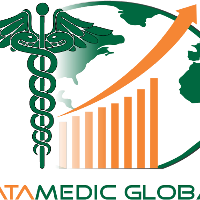The myth
Physicians and other qualified health professionals are required to document the time spent on each specific task associated with an outpatient visit.
Debunking the myth
In a significant departure from the 1995 and 1997 rules, the 2021 revisions to the E/M office visit coding documentation requirements no longer include the documented history and physical exam in determining the appropriate level of service. Physicians now have the choice to bill office/outpatient E/M encounters solely based on medical decision making (MDM) or the total time spent on the date of that encounter. The time spent on the encounter includes both face-to-face and non-face-to-face time personally spent by the physician (and/or other qualified health care professional) and may include several activities (see list below).
Additional clarification
Documenting and coding based on MDM
When documenting and selecting a code based on MDM, consider that MDM includes establishing diagnoses, assessing the status of a condition, and/or selecting a management option. MDM in the office or other outpatient service codes are defined by three elements:1 [AMA Coding Changes Guide (PDF)]
The number and complexity of problem(s) that are addressed during the encounter.
The amount and/or complexity of data to be reviewed and analyzed.
The risk of complications and/or morbidity or mortality of patient management decisions made at the visit, associated with the patient’s problem(s), the diagnostic procedure(s), treatment(s).
Documenting and coding based on time
If time is to be used to calculate the E/M code rather than MDM, physicians should include the total amount of time they spent associated with that visit on the date of service in determining which code to use. Besides face-to-face time in the exam room or in a telehealth encounter, this also includes prep time and follow-up work on that same date. The CPT® Evaluation and Management Code and Guideline Changes provide durations of time for billing based on time for a variety of E/M services. Times associated with office or other outpatient services are expressed in discrete, non-overlapping ranges within the code descriptors.1
CPT code and time range
99202: 15-29 mins
99203: 30-44 mins
99204: 45-59 mins
99205: 60-74 mins
99211: N/A
99212: 10-19 mins
99213: 20-29 mins
99214: 30-39 mins
99215: 40-54 mins
Important notes
There is no requirement to document the total time spent if the physician is not using time to calculate the level of service.
If using MDM for the level of service, there is no requirement to spend the correlating amount of time on the encounter.
Physician/other qualified health professional time includes the following activities (when performed).
- Preparing to see the patient (e.g., review of tests)
- Obtaining and/or reviewing separately obtained history
- Performing a medically necessary appropriate examination and/or evaluation
- Counseling and educating the patient/family/caregiver
- Ordering medications, tests, or procedures
- Referring and communicating with other health care professionals (when not reported separately)
- Documenting clinical information in the electronic or other health record
- Independently interpreting results (not reported separately) and communicating results to the patient/family/caregiver
- Care coordination (not reported separately)
Do not count time spent on the following:
- The performance of other services that are reported separately
- Travel
- Teaching that is general and not limited to discussion that is required for the management of a specific patient

